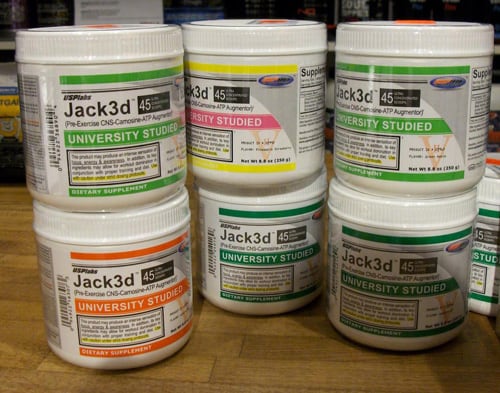Scientists at the Chemical and Veterinary Investigation Agency (CVIA) in Karlsruhe used NMR to analyse 16 supplement products – most of which had been seized by German customs officers. Nine of the samples tested positive for DMAA, with the concentration ranging between 3.1-415g/kg.
“This work presents for the first time an NMR-based method with minimal sample preparation for determination of DMAA in sports nutrition and dietary supplements,” wrote the scientists in Drug Testing and Analysis.
The new method uses Nuclear Magnetic Resonance (NMR) spectroscopy, a technology used widely by the food industry for analysing products such as snacks, wine and fruit juice. Over half of the seized products contained DMAA.
Dr Dirk Lachenmeier of the CVIA in Karlsruhe said the illegal supplements, usually in tablet or powder form, derive from outside the EU – probably Asia – to supply a black market of mostly gym enthusiasts who use DMAA as a pre-workout supplement.
“These are typically supplements intended for sportsmen and women and sports nutrition products – and especially those imported from outside the EU,” Dr Lachenmeier said.
The fact so many products contained DMAA demonstrates global bans have not stopped trade in the stimulant that was linked to many adverse events and deaths, including in the US military.
State control
Working for the German government in its capacity as the official medicine and food control laboratory, the CVIA routinely tests all products that are likely to contain DMAA and other banned compounds.
Professional sportsmen and women have been prohibited from using DMAA since 2009 when it was included on the World Anti-Doping Agency (WADA) prohibited list.
After a lengthy investigation into its sourcing and safety by regulators around the world, it was largely banned in food supplements in food supplements in 2012.
Nevertheless, the European Commission’s Rapid Alert System for Food and Feed (RASFF) has recorded 40 instances of unauthorised use of DMAA in food supplements since 2012.

DMAA detection, inspected
Usually gas chromatography-mass spectrometry (GC-MS) or liquid chromatography-mass spectrometry (LC-MS) are used for testing products for the presence of DMAA. The problem with these techniques, said Dr Lachenmeier, is the sample preparation required.
By contrast, NMR provides highly specific analysis without any need for sample clean-up or chromatographic separation.
“This means that the sample only has to be dissolved and can be directly placed in the spectrometer...hence NMR is much quicker and requires less human intervention in the sample preparation. It allows a very high throughput in screening analyses – about 20 minutes per sample.”
Dr Lachenmeier likens the technique to a medical MRI (Magnetic Resonance Imaging) scan.
“NMR allows you to detect atoms in a highly specific fashion so that the structure and quantity of molecules can be determined. The sample is placed in a super-conducting magnet and the magnetic resonances of the molecules are measured, which can then be correlated to structural information,” he explained.
Now that this method has been fully validated Dr Lachenmeier said it can be recommended for routine use in food testing, customs or doping control laboratories.
The biggest-selling DMAA product was Texas-based USPLabs' 'Jack3d', but the product no longer features DMAA in its formulation.
Source: Drug Testing and Analysis,
9 June 2014. doi: 10.1002/dta.1677. [Published online ahead of print]
‘Rapid assessment of the illegal presence of 1,3-dimethylamylamine (DMAA) in sports nutrition and dietary supplements using 1 H NMR spectroscopy’
Authors: Monakhova YB, Ilse M, Hengen J, El-Atma O, Kuballa T, Kohl-Himmelseher M, Lachenmeier DW.
